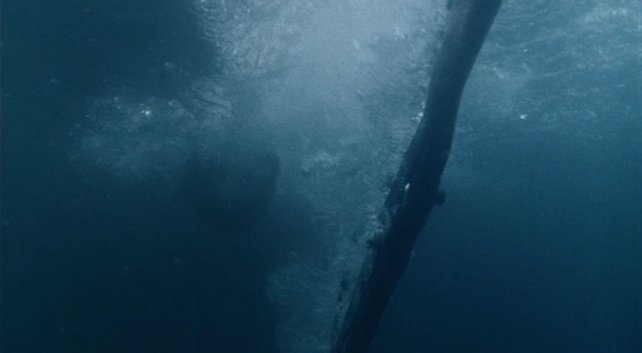 We'll
start with the underwater shot. Codecs have never liked water a lot so don't
expect too much.
We'll
start with the underwater shot. Codecs have never liked water a lot so don't
expect too much.This movie is known as notoriously hard to encode and therefore ideally fits my needs. I chose 3 scenes here: The beach landing (frames 8430 - 22281), a still scene in the controller office (43790 - 45189) that has a lot of film grain and a night scene (frames 94122 - 106098). This should prove sufficiently difficult to get any codec into trouble. Let's see if I succeed.
I don't think there's too much to be said about the beach scene. No steadycam, underwater shots, a lot of debris and confusion on the screen. Before the shooting starts there are many close-ups in the boat. Most codecs blur the faces quite a bit, SBC and XviD being the only exceptions to the rule.
 We'll
start with the underwater shot. Codecs have never liked water a lot so don't
expect too much.
We'll
start with the underwater shot. Codecs have never liked water a lot so don't
expect too much.
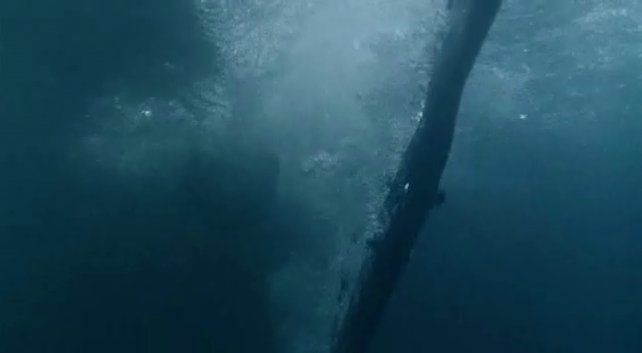 There's
a lot of smearing going on in this 3ivX scene, basically everywhere where there
are no bubbles.
There's
a lot of smearing going on in this 3ivX scene, basically everywhere where there
are no bubbles.
Later on when the camera follows Tom Hanks' journey towards the shore and enters the water a couple of times you can see blocks both underwater and above the water.
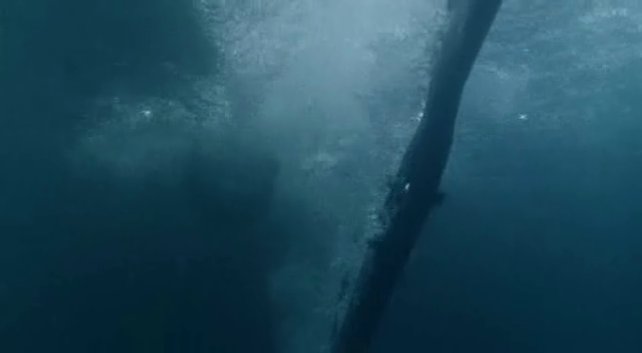 DivX5
exhibits banding effects (which you can see a bit to the right of the gun in
the screenshot) and also some smearing.
DivX5
exhibits banding effects (which you can see a bit to the right of the gun in
the screenshot) and also some smearing.
During the walk towards the shore, the underwater bits get pretty blocky but things are a bit better on the topside.
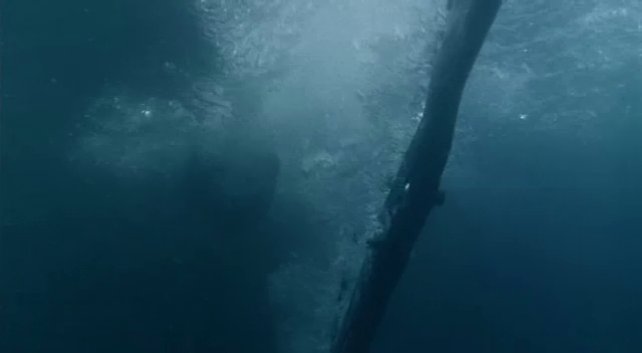 RV9
also exhibits some banding effects, but a lot less smearing than other codecs.
The screenshot illustrates why: There's less details in large parts of the screen
so bits were saved in those areas.
RV9
also exhibits some banding effects, but a lot less smearing than other codecs.
The screenshot illustrates why: There's less details in large parts of the screen
so bits were saved in those areas.
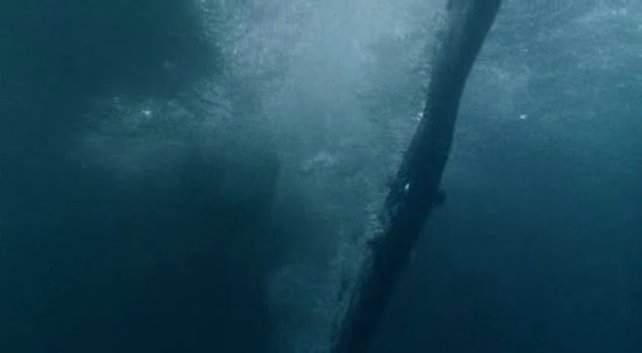 SBC
exhibits smearing and blocks underwater, in fact it has more blocks than any
other codec. And during the walk towards the shore, things are blocky underwater
and above the water.
SBC
exhibits smearing and blocks underwater, in fact it has more blocks than any
other codec. And during the walk towards the shore, things are blocky underwater
and above the water.
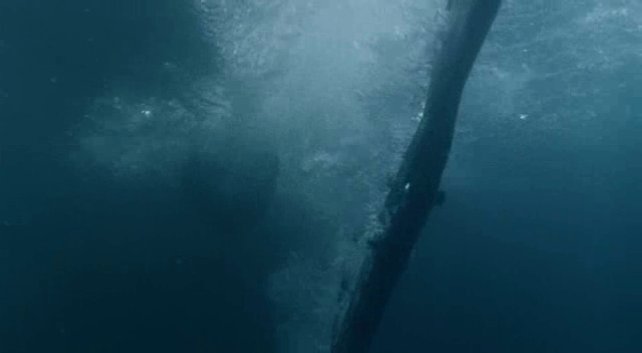 WMV9
also exhibits some banding underwater.
WMV9
also exhibits some banding underwater.
The walk towards the shore looks okay, definitely not blockless, but the blocks aren't too disturbing.
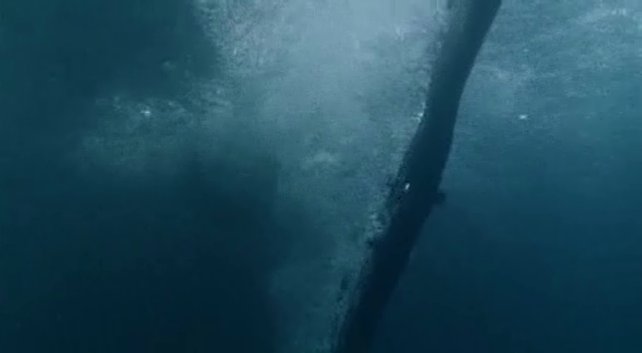 Finally,
XviD exhibits both banding and blocks underwater and blocks during the walk
towards the shore. They are not as numerous as in SBC though.
Finally,
XviD exhibits both banding and blocks underwater and blocks during the walk
towards the shore. They are not as numerous as in SBC though.
The next scene shows the water from above.
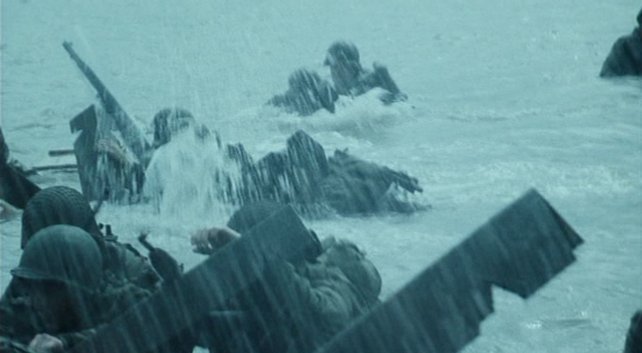 The
water surface and the water splashing make every codec's life really hard.
The
water surface and the water splashing make every codec's life really hard.
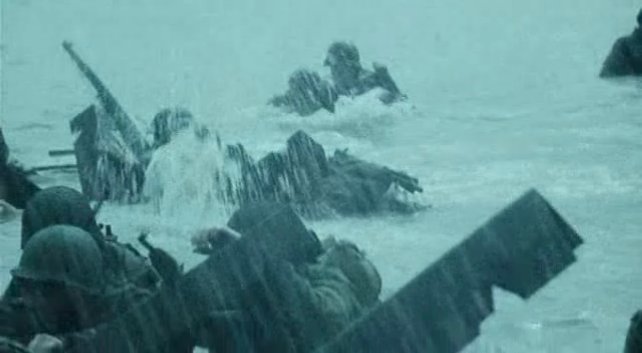 3ivX
is once again beginning to have trouble and starts to reduce details considerably,
an effect which will become more and more visible as the scene goes on.
3ivX
is once again beginning to have trouble and starts to reduce details considerably,
an effect which will become more and more visible as the scene goes on.
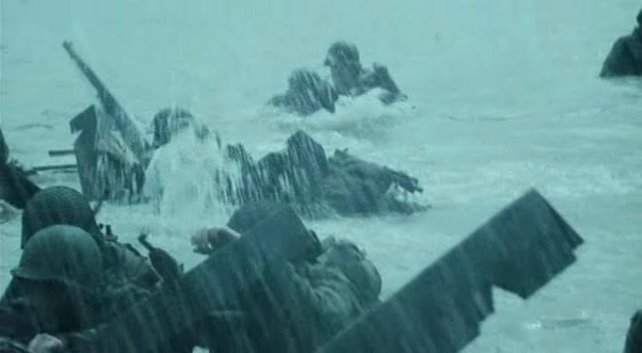 DivX5
reduces details somewhat, thus exhibiting less blocks than some of its competitors.
DivX5
reduces details somewhat, thus exhibiting less blocks than some of its competitors.
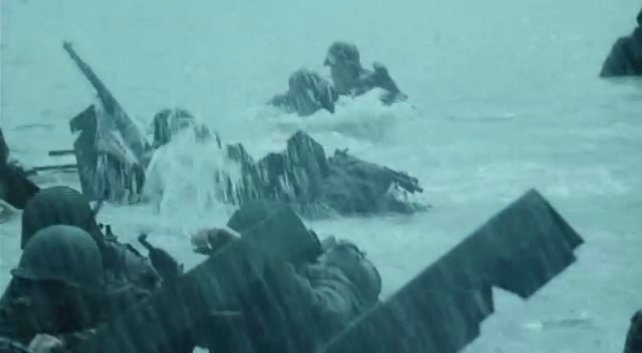 RV9
also eliminates some details to reduce blocking.
RV9
also eliminates some details to reduce blocking.
 SBC
manages to retain a large amount of details but pays for it with visible blocks
on the water surface (though this particular shot isn't really good at showing
it).
SBC
manages to retain a large amount of details but pays for it with visible blocks
on the water surface (though this particular shot isn't really good at showing
it).
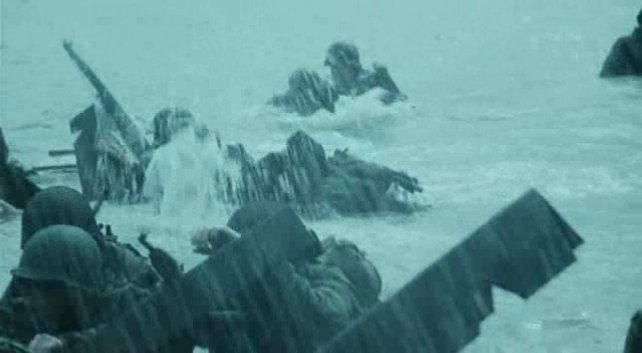 WMV9
is comparable to DivX5 in this scene, not showing too many disturbing blocks
but also having reduced the detail level somewhat.
WMV9
is comparable to DivX5 in this scene, not showing too many disturbing blocks
but also having reduced the detail level somewhat.
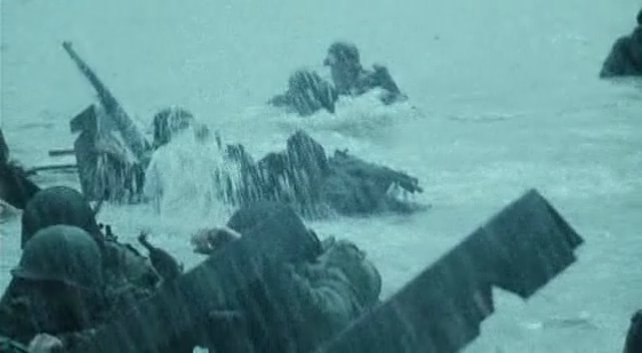 Finally
we have XviD which also pays for details with an increased amount of blocks.
Finally
we have XviD which also pays for details with an increased amount of blocks.
Water is really not the element of MPEG-4 codecs. Let's get on shore..
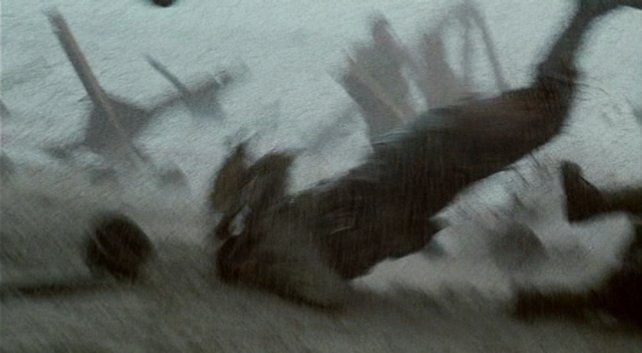 This
scene used to be really good to make a difference between codecs, but this time
the differences were a lot less noticeable.
This
scene used to be really good to make a difference between codecs, but this time
the differences were a lot less noticeable.
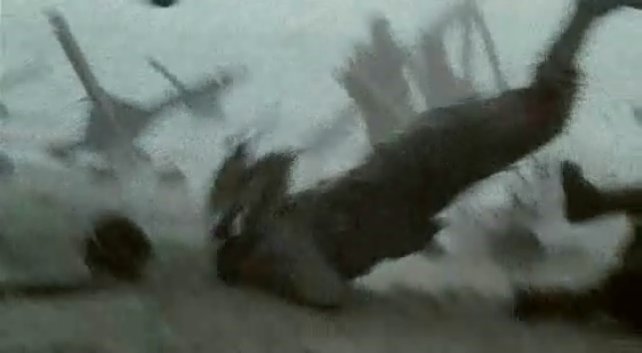 3ivX
is the codec that disproves the rule. As previously mentioned it turned bad
when getting close to the shore.
3ivX
is the codec that disproves the rule. As previously mentioned it turned bad
when getting close to the shore.
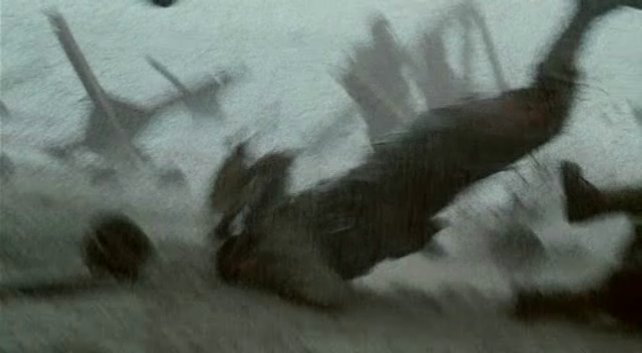 DivX5
DivX5
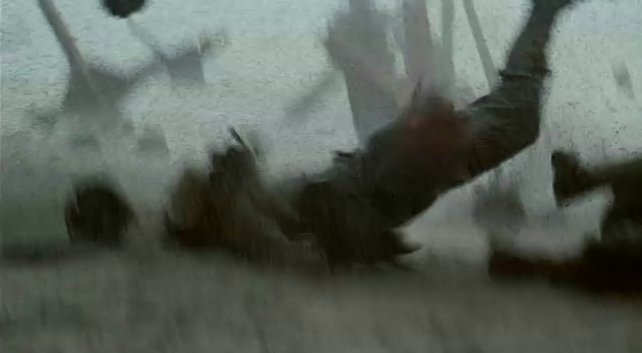 RV9.
Don't you love it when you can't find the source frame in the video stream?
RV9.
Don't you love it when you can't find the source frame in the video stream?
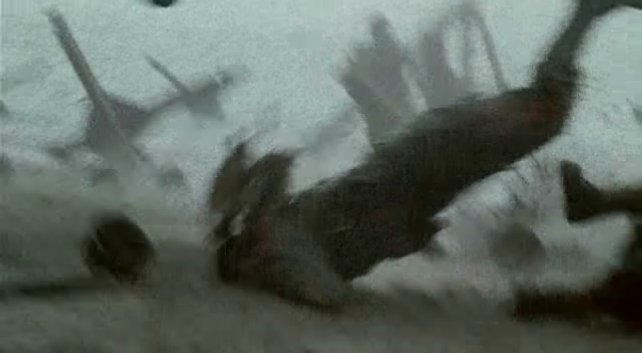 DivX3
DivX3
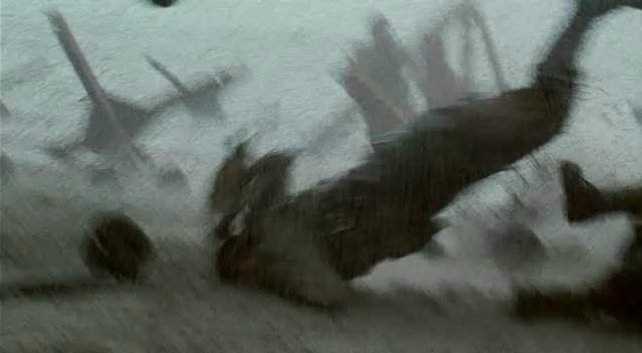 WMV9
WMV9
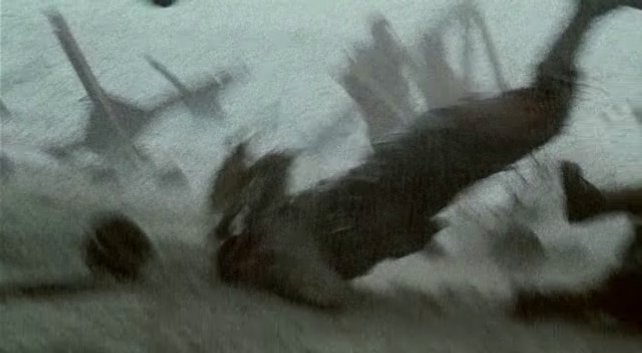 XviD
XviD
Before we proceed to the next shot some remarks which cannot be illustrated
with the screenshots. When you see the hills from the Allied perspective, codecs
have various detail levels. It ranges from very detailed (WMV9) to some blocks
(DivX5, XviD), many blocks (SBC) to no details (RV9).
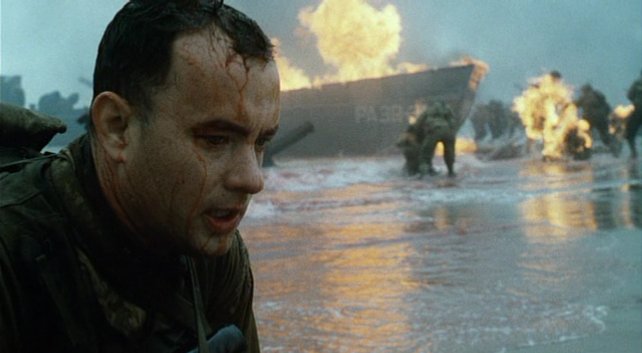
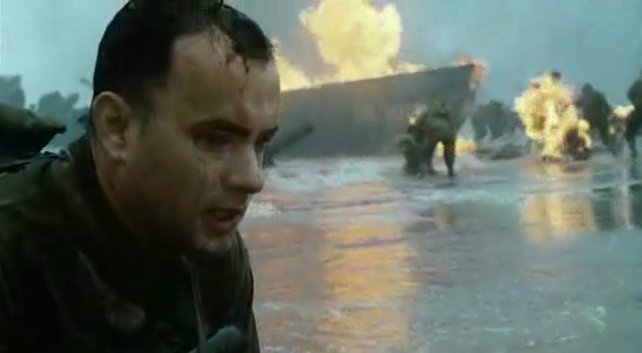 In
the meantime, 3ivX has managed to recover for a short while but then turned
to no-details mode again.
In
the meantime, 3ivX has managed to recover for a short while but then turned
to no-details mode again.
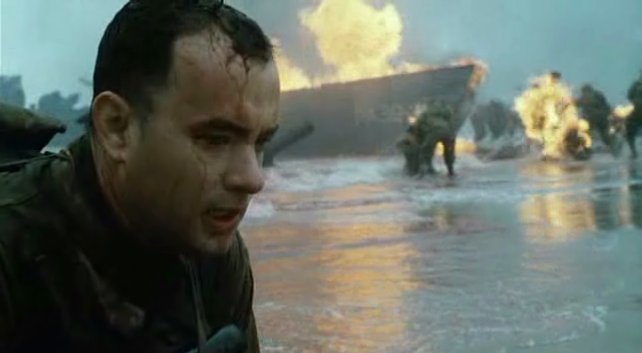 DivX5
has a tendency the smear the sky during this scene.
DivX5
has a tendency the smear the sky during this scene.
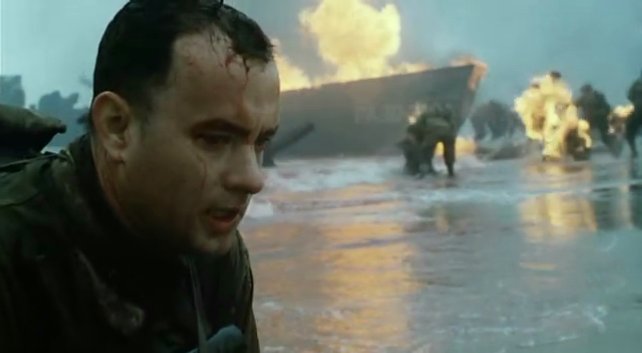 RV9
RV9
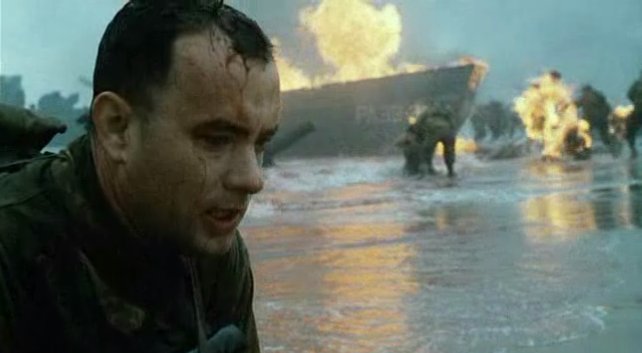 SBC
SBC
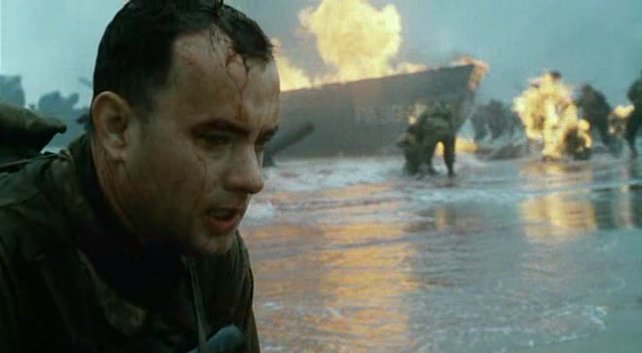 WMV9
WMV9
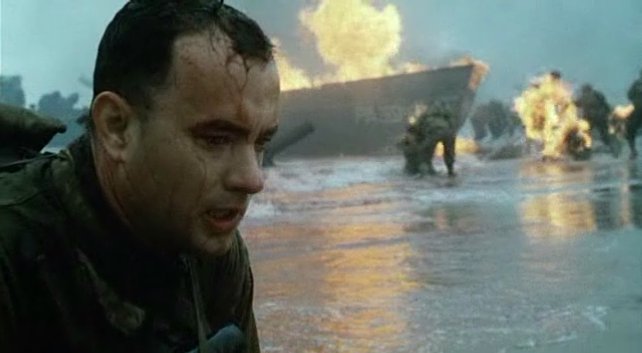 There's
a slight smearing effect in the sky which you cannot see on this XviD screenshot.
There's
a slight smearing effect in the sky which you cannot see on this XviD screenshot.
The 2nd scene I reviewed is rather short and does not contain a great deal of
movement. I therefore focused on faces and textures.
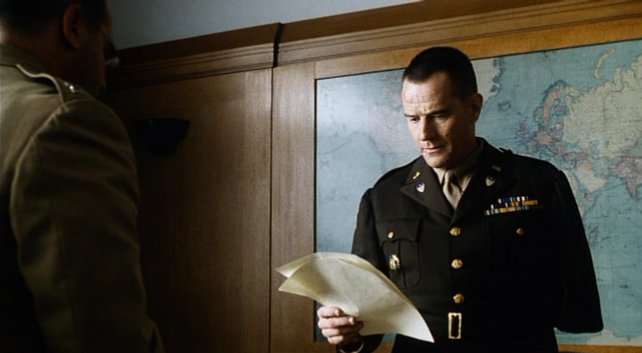 Many
codecs have problems with the wooden texture and the window blinds (which you
can't see here).
Many
codecs have problems with the wooden texture and the window blinds (which you
can't see here).
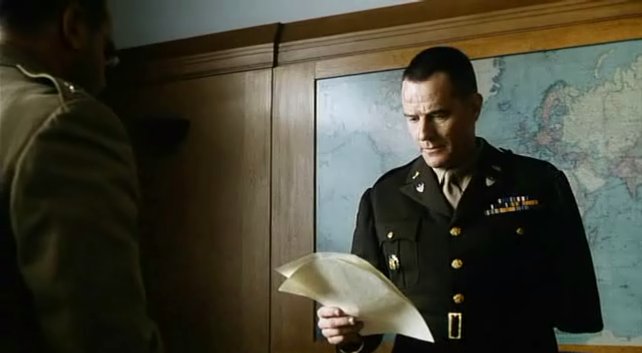 3ivX
managed to recover for this scene. It's still not very detailed but a definitive
improvement compared to what we've seen before.
3ivX
managed to recover for this scene. It's still not very detailed but a definitive
improvement compared to what we've seen before.
There's some instability of the wooden texture and the blinds are not very clear, sometimes two elements tend to be connected, blocking the view outside.
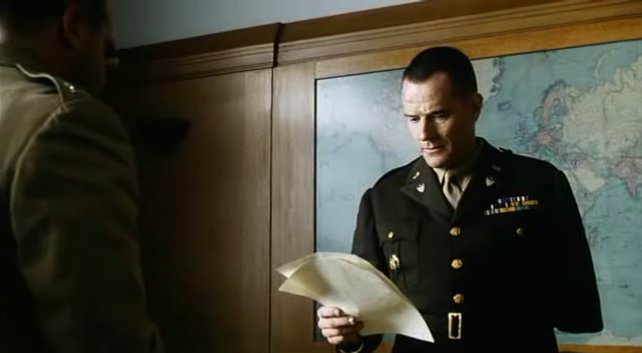 DivX5
tends to blur edges of people during this scene, there's some smearing on the
wood and the blinds are not all clearly visible.
DivX5
tends to blur edges of people during this scene, there's some smearing on the
wood and the blinds are not all clearly visible.
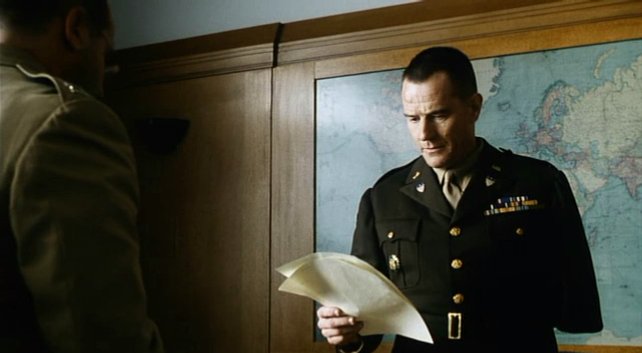 RV9
has no blocks during this scene but there's slight movement visible on the wood.
As for the blinds, they look pretty good.
RV9
has no blocks during this scene but there's slight movement visible on the wood.
As for the blinds, they look pretty good.
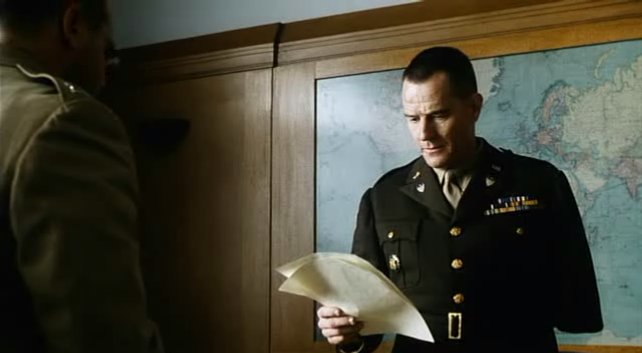 SBC
has the wood come alive, there's a lot of movement on the wooden walls.
SBC
has the wood come alive, there's a lot of movement on the wooden walls.
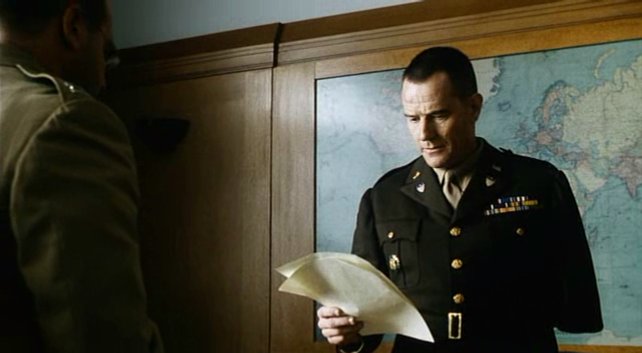 WMV9
tends to smear the heads and the wood a bit and the blinds are fuzzy but all
visible.
WMV9
tends to smear the heads and the wood a bit and the blinds are fuzzy but all
visible.
 XviD
has some slight movement on the wood, and the blinds are all distinctible except
for a very short period.
XviD
has some slight movement on the wood, and the blinds are all distinctible except
for a very short period.
The last scene is a night scene where our soldiers rest for the night.
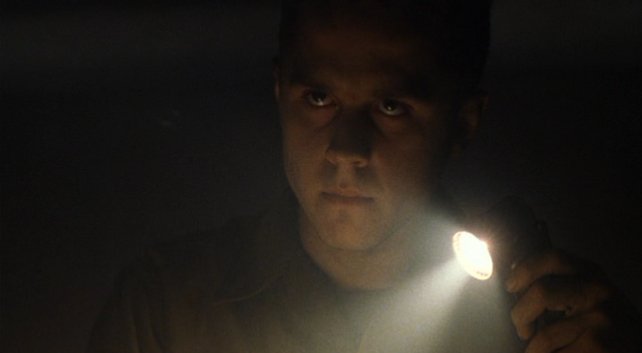 Light
in the dark is a good test for all codecs, let's see how the pack can handle
this scene..
Light
in the dark is a good test for all codecs, let's see how the pack can handle
this scene..
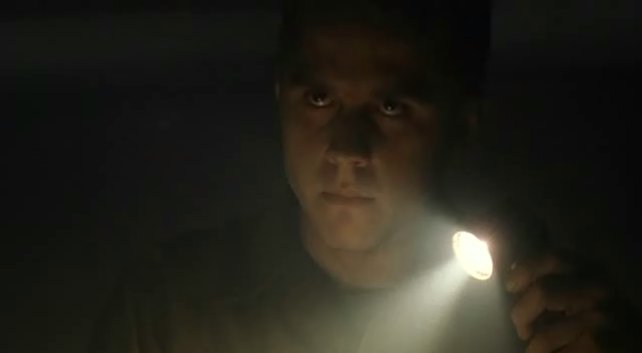 The
flashlight scene is pretty blurry in 3ivX. Before this scene where we see Tom
Hanks the background is blocky, but the blocks tend to remain at the same place.
The
flashlight scene is pretty blurry in 3ivX. Before this scene where we see Tom
Hanks the background is blocky, but the blocks tend to remain at the same place.
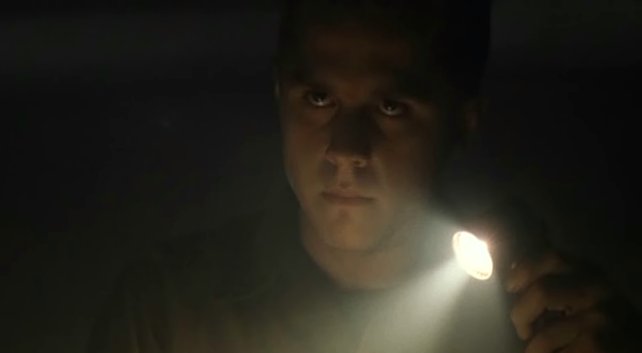 The
flashlight scene is also somewhat fuzzy in DivX5. Prior to this scene we have
no visible movement in the background, and the writing of Giovanni Ribsi is
readable.
The
flashlight scene is also somewhat fuzzy in DivX5. Prior to this scene we have
no visible movement in the background, and the writing of Giovanni Ribsi is
readable.
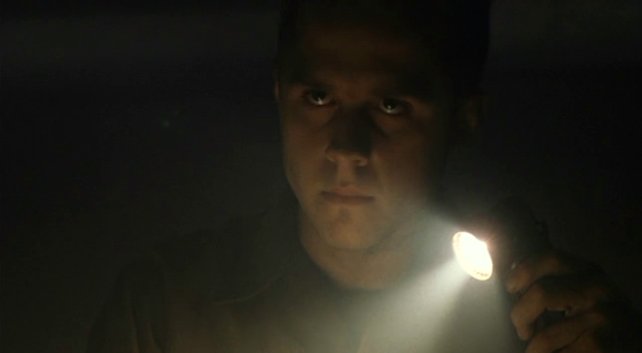 RV9
has been saving bits from the background to use them for a good flashlight scene.
RV9
has been saving bits from the background to use them for a good flashlight scene.
Prior to this scene the background was static.
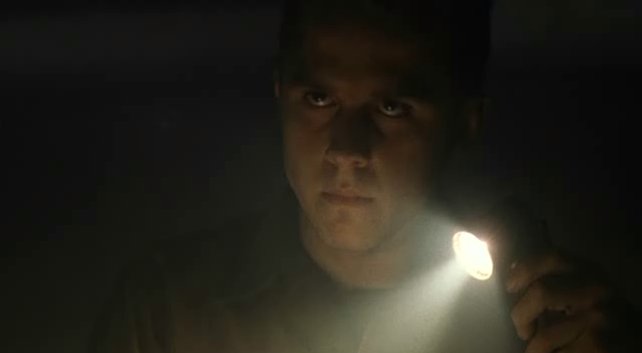 SBC
is detailed but also has some blocks.
SBC
is detailed but also has some blocks.
Those blocks are also present in the background when we see Tom Hanks.
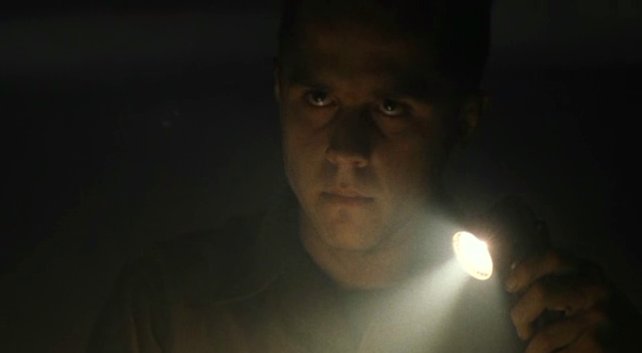 WMV9's
flashlight scene is okay, but the writing is barely readable.
WMV9's
flashlight scene is okay, but the writing is barely readable.
Prior to this we had some banding effects in the background.
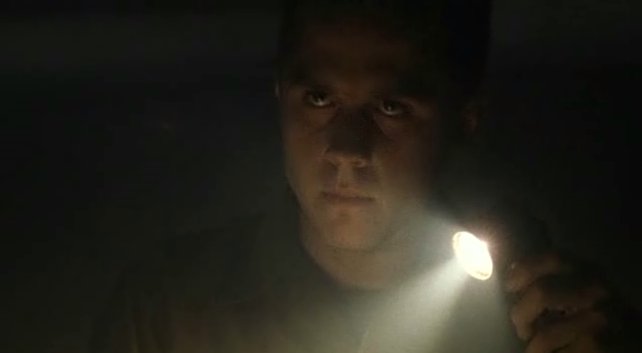 Finally,
XviD exhibits slight QPel artifacts but otherwise performs just fine during
this scene.
Finally,
XviD exhibits slight QPel artifacts but otherwise performs just fine during
this scene.
It also has no problems with the background prior to this close-up.
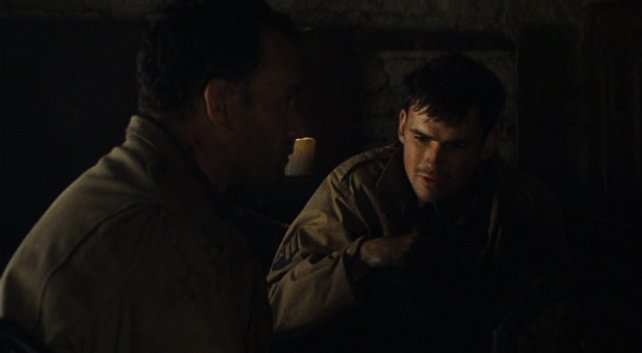 The
hard thing in this scene is for codecs not to let the viewer know when there's
a new keyframe and not to show too many visible blocks in the almost completely
dark areas of Tom Hanks.
The
hard thing in this scene is for codecs not to let the viewer know when there's
a new keyframe and not to show too many visible blocks in the almost completely
dark areas of Tom Hanks.
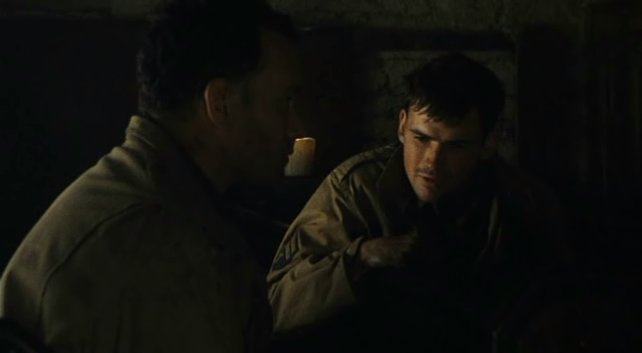 3ivX
3ivX
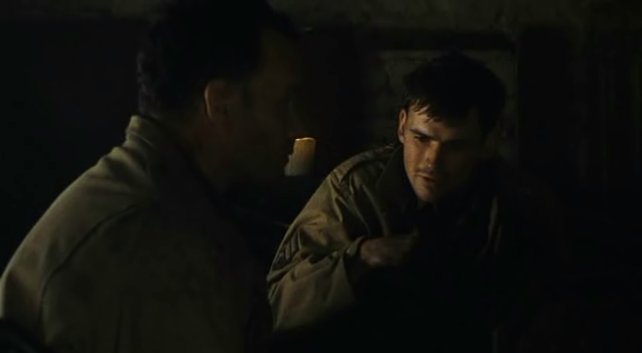 DivX5
fails to completely mask the readjustment effect. The magnitude of the effect
is about the same as in XviD.
DivX5
fails to completely mask the readjustment effect. The magnitude of the effect
is about the same as in XviD.
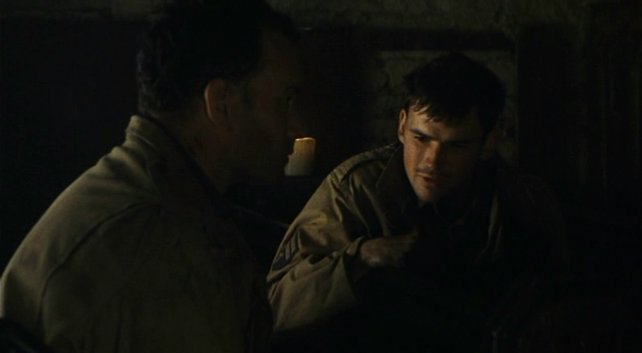 I
did not notice any quality jump effects in RV9.
I
did not notice any quality jump effects in RV9.
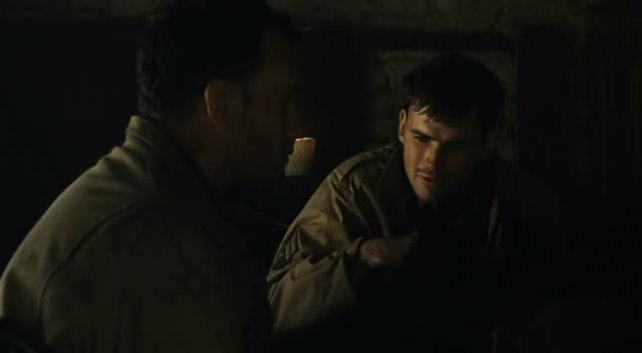 In
SBC the keyframe effect is almost unspottable.
In
SBC the keyframe effect is almost unspottable.
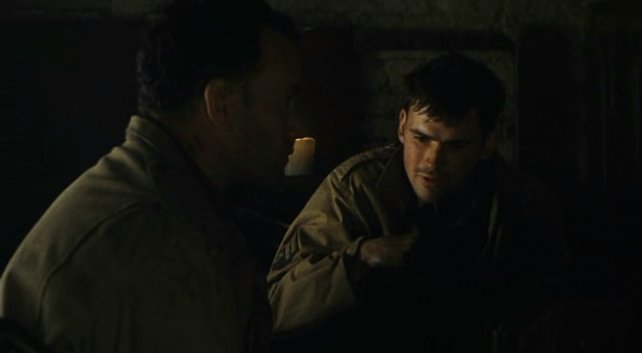 WMV9
performs not unlike most other codecs, the effect is slightly visible but only
if you concentrate.
WMV9
performs not unlike most other codecs, the effect is slightly visible but only
if you concentrate.
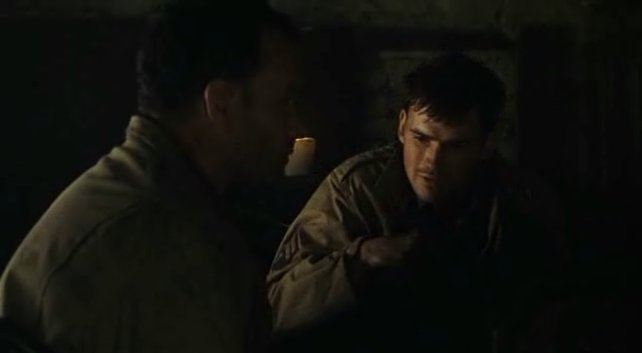 XviD
fails to completely mask the readjustment effect but you have to concentrate
pretty hard to spot it.
XviD
fails to completely mask the readjustment effect but you have to concentrate
pretty hard to spot it.
Soon after this scene I spotted an anomaly in XviD: When Tom Hanks goes to the door of the church there's a pretty bad quality adjustment effect.
Last but not least a scene without comments.
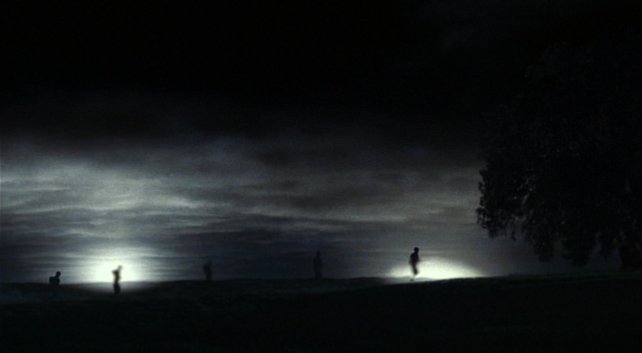 The
original.
The
original.
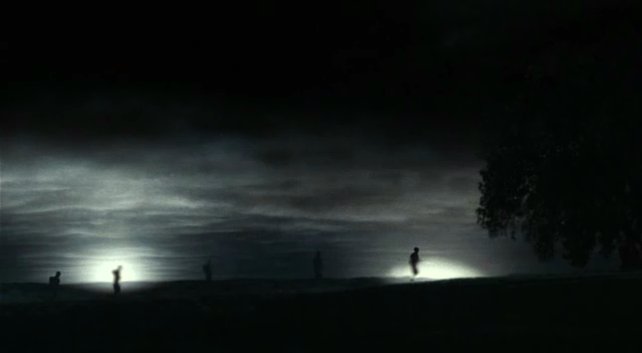 3ivX
3ivX
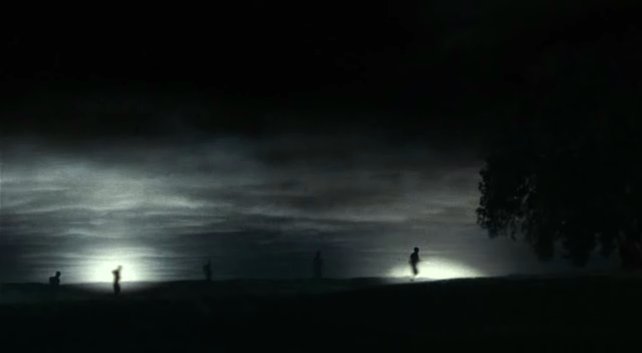 DivX5
DivX5
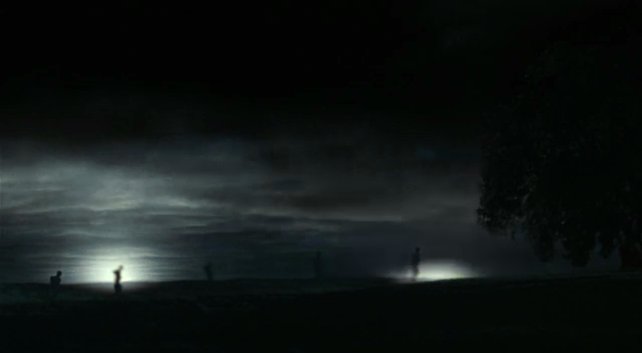 RV9
RV9
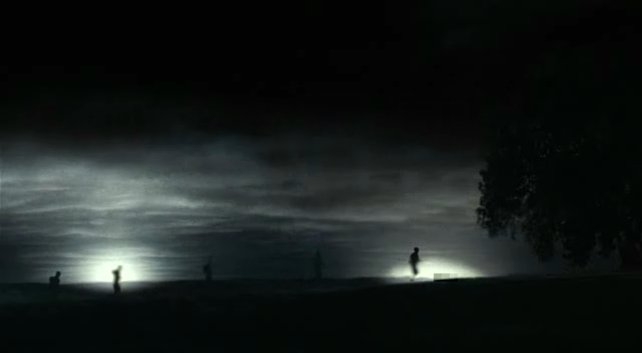 SBC
SBC
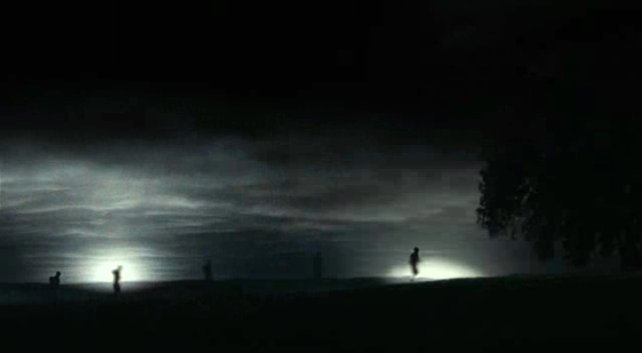 WMV9
WMV9
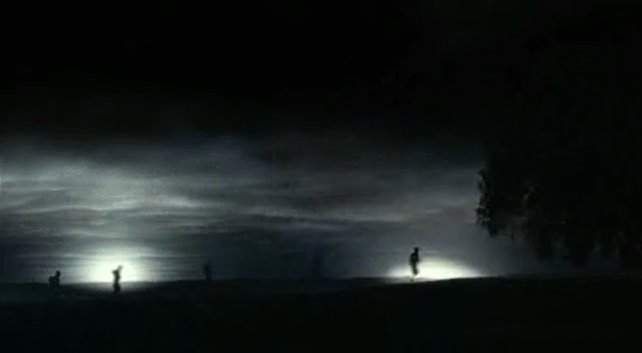 XviD
XviD
In conclusion, I noticed a general improvement especially in the night scenes when comparing to the last comparison. I don't know if staying in YV12 colorspace contributed something, or if the better video equipment (no more D/A and A/D conversions on the way from GFX card to the screen) had anything to do with this.
XviD managed to recover from a catastrophic result of the last test, and while it made a very good impression, that glitch I found gives you something to think about. It reminds me of previous problems that this codec has had with this particular movie. Were it not for that I'd recommend XviD to anyone who values details over zero blocks. If you're in this category, SBC is another solution as is DivX5 (though it's less detailed). WMV9 and RV9 tend to get rid of more details and in my opinion RV9 does its job better.
Now you can proceed to the Futurama test or go directly to the conclusion.
This document was last updated on May 5, 2003